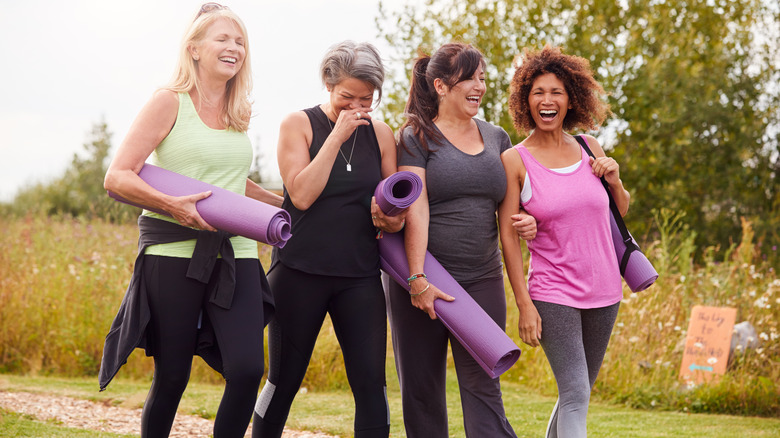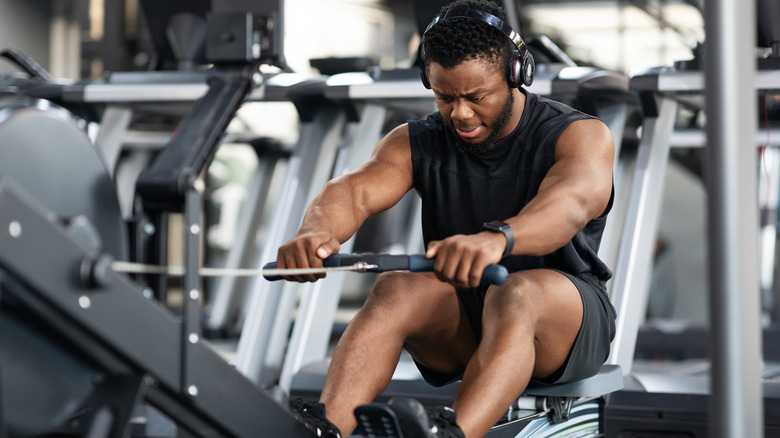What Does It Really Mean To Do A Low-Impact Workout?
If you've ever wondered what the difference is between a low-impact workout and a high-impact workout, look no further. As it turns out, whether or not an exercise is low-impact or high-impact largely depends on the way it affects your joints, according to PopSugar. Low-impact workouts put little stress on your joints. While all exercise causes stress on the body, low-impact exercise helps you respond more effectively to this stress.
That's because low-impact workouts involve keeping one foot on the ground at all times, unlike high-impact workouts, like running. "A low-impact workout is one in which your body is not being forced to brace itself for impact," CityRow founding instructor, Annie Mulgrew, told PopSugar. It's important to note, however, that impact is not the same as intensity. It is still possible to have a high-intensity, low-impact workout. That's because intensity is a measure of how hard your body is working. You can still challenge yourself without putting too much stress on your joints.
Benefits of low-impact workouts
One of the most touted benefits of low-impact workouts is that they're fairly gentle on your joints, which can help reduce the risk of injury, joint pain, and arthritis (via LiveStrong). Because of this, low-impact workouts are ideal for older adults, people who aren't used to exercising, and those with injuries or joint conditions. In addition, low-impact workouts are also a great way to burn calories and build muscle. That's because high-intensity, low-impact workouts, like strength training, put a higher demand on your muscles, which can help you develop muscle mass and increase your metabolic rate.
Low-impact exercises can also improve your mobility. Pete McCall, a certified strength and conditioning specialist, told LiveStrong that low-impact workouts can help promote blood flow and expand your range of motion, which can make it easier for you to move. "Low-impact, body-weight exercises get you moving your body in all directions and planes of motion, without putting any force on the joints," McCall said.
The best low-impact workouts
If you're looking to put less stress on your body, there are plenty of low-impact workouts you can try to help keep yourself in shape without increasing your risk of injury, according to experts at Health. One low-impact workout you can engage in is rowing. As it turns out, rowing is a full-body workout that combines a mix of cardio and endurance training without putting added stress on your joints and ligaments. It can also burn quite a bit of calories in a short period of time. Believe it or not, using a rowing machine for an hour can burn around 500 calories.
Another great low-impact exercise is walking. Walking is well known for its weight management and cardiovascular benefits, but it can also give you a vigorous workout if you walk on an incline. Whether you're outside or on a treadmill, walking on an incline and increasing your speed can help give you a more intense workout without putting too much weight and stress on your joints. In addition, kettlebell training is an effective, low-impact workout that can strengthen your muscles with minimal impact on your body. "Kettlebell training is fantastic because you're not leaving the floor at all," certified Barre instructor and trainer at TS Fitness in New York City, Sophia Pellegrom, told Health.



